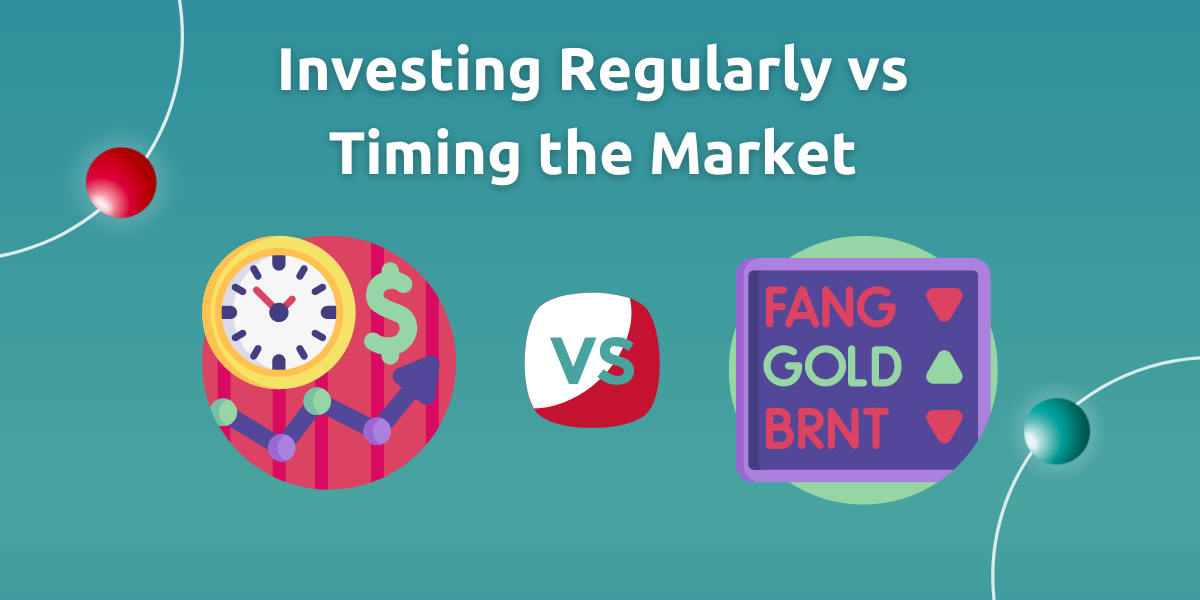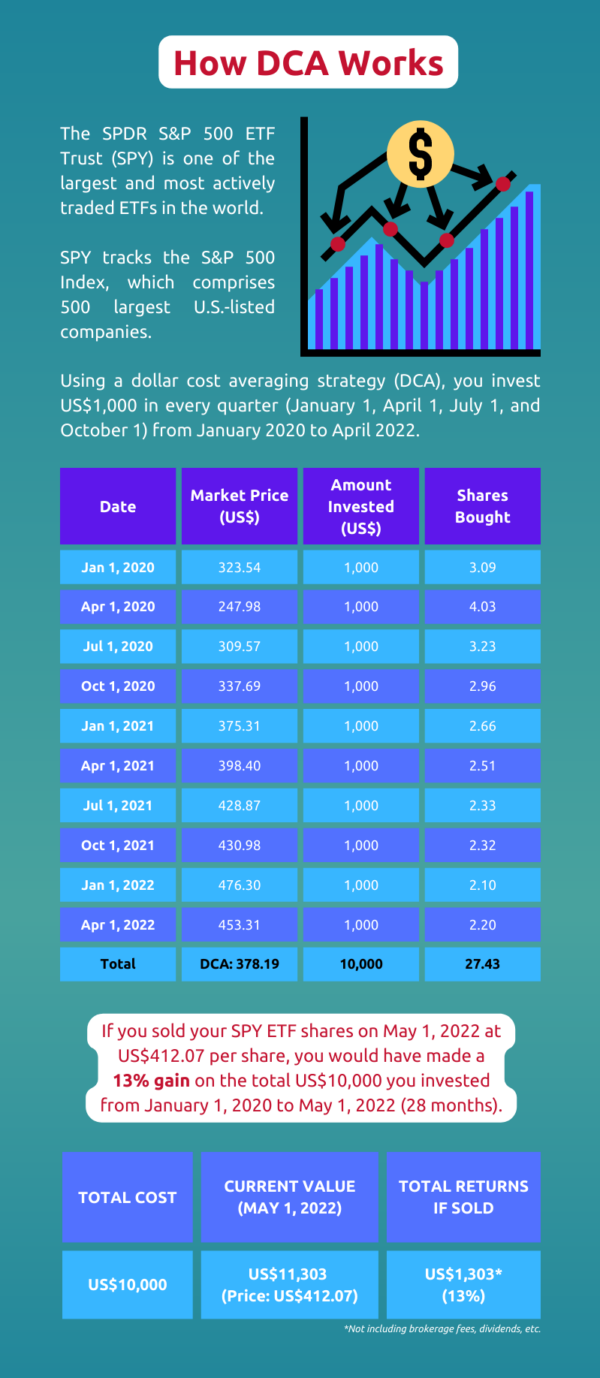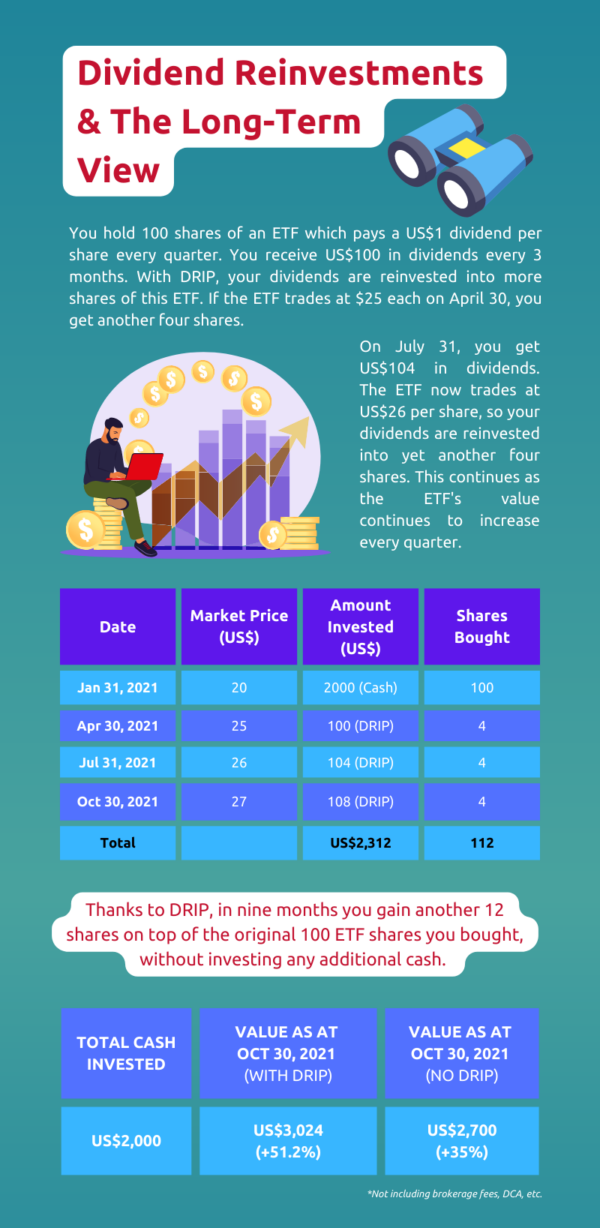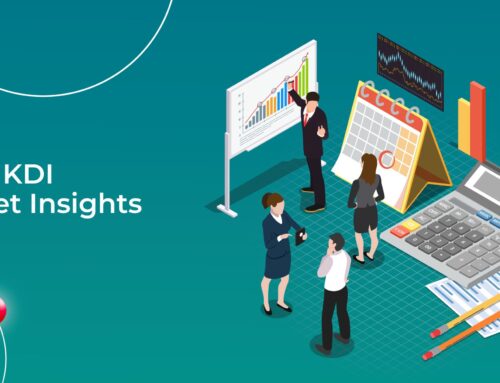Investing Regularly vs Timing the Market

Deciding to invest is the first step towards making a conscious effort to accumulate wealth over time. The next step is deciding your main investing strategy.
Investing regularly, otherwise known as “time in the market” or “buy-and-hold” strategy, is a long-term passive strategy where investors keep a relatively stable portfolio over time, regardless of short-term fluctuations in the market.
On the other hand, timing the market involves trading in and out of the stock market or certain assets based on predictions of future price movements. If you’re a market timer, you’re likely a strong believer in sayings like “buy low, sell high” and “beating the market”.
While market timers do make headlines for massive gains in a short period of time, like hedge fund manager Bill Ackman’s 100x return on hedging against expected coronavirus impacts, it was not long ago that he made headlines for losing US$1 billion on a single stock in just a few months.
Long-term, buy-and-hold wins
Over the long term, market timing has often failed as a money maker. It is impossible for an investor to know exactly when to enter or leave the market – unless they are privy to non-public information. Due to the frequent buy and sell orders executed, market timers also have to pay more in transaction costs and broker commissions, in addition to paying daily attention to markets. In short, if you have a day job, market timing may not be your cup of tea.
Meanwhile, buy-and-hold investors of index funds – which track entire stock market indices – not only benefit from fewer ancillary costs, but also have historically seen positive returns over a long-term period. Warren Buffett, arguably the world’s most famous investor, said during the 2015-2016 stock market sell-off that investors should not watch market fluctuations too closely: “The money is made in investments by investing and by owning good companies for long periods of time. If they buy good companies, buy them over time, they’re going to do fine 10, 20, 30 years from now.”
The research supports buy-and-hold: according to 2012 research by Charles Schwab, between 1926 and 2011, a 20-year holding period in the S&P 500 – an index that tracks the stock performance of 500 large companies listed on exchanges in the U.S. – never produced a negative result.
One of the oldest passively-managed funds is the Voya Corporate Leaders Trust Fund, established in 1935. The fund invested in 30 of the Great Depression’s major companies – including railroad, telegraph and radiator companies – and never expanded its investment ambit. Almost 90 years later, thanks to various mergers and acquisitions, the fund often outgains the index. Yes, this is an extreme case of buy-and-hold, yet it still works.
Investing Regularly with DCA
Dollar-cost averaging (DCA) is the most common strategy for buy-and-hold investors. Using DCA, you invest your money in equal portions, at regular intervals, regardless of the ups and downs in the market. You just have to ensure you invest in stable, blue-chip assets.

Dividend reinvestment
Dividends are distributed by the company as a portion of its earnings to shareholders on a quarterly, half-yearly or annual basis. Individual companies may choose not to pay out dividends in years of losses. With dividend reinvestment, buy-and-hold investors are able to maximise their long-term returns.
The DCA calculation above does not take into account dividend payouts. Specific exchange-traded funds (ETFs), like SPY above, pay out dividends in cash. Unless your broker offers a Dividend Reinvestment Plan (DRIP), you would have to conduct dividend reinvestment manually by purchasing additional shares with the cash received from dividend payments. DRIPs automatically reinvest your cash dividends into additional shares or fractional shares of that same investment.
Not only will you benefit from buying more shares via DCA regularly, your DRIP will compound your wealth accumulation process as long as you hold on to your ETFs.

So how do you get an investment product that can execute a stable buy-and-hold strategy for you with DCA while automatically reinvesting your dividends via DRIP? Robo-advisor KDI Invest makes buy-and-hold investing easy, enabling fractional share investing and automatically reinvesting your dividends paid out from stable, blue-chip ETFs.
KDI Invest’s artificial intelligence (AI)-driven algorithm invests in a pool of high-liquidity U.S. ETFs based on your risk profile. With no human intervention, KDI Invest also boasts extremely competitive fees and no hidden charges: zero fees for investments below RM3,000 and ranging from 0.3% to 0.7% annually (not per transaction!) for investments above RM3,000.
In contrast, conventional asset management products typically carry 1.5% annual management fees, not to mention up to 5.5% sales charges, hidden fees and penalties.
Download the KDI mobile app on Google Play or the Apple App Store to enjoy super low fees and start your long-term investing journey today.
